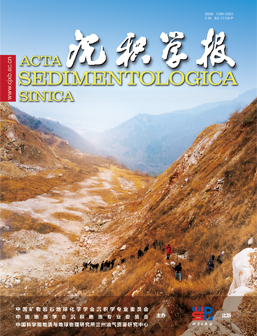Quantitative Analysis of Downstream Fining Pattern in Fluvial Fans: A Case Study of the Dagele River, Qaidam Basin
doi: 10.14027/j.issn.1000-0550.2025.050
- Received Date: 2025-05-12
- Available Online: 2025-11-18
-
Key words:
- Distributive fluvial system /
- Sediment particle size /
- Quantitative analysis /
- Qaidam Basin /
- Dagle fluvial fan
Abstract: [Objective] This study aims to establish a quantitative model of downstream grain size diminution in large-scale Distributive Fluvial Systems(fluvial fans) to provide a knowledge base for predicting the distribution of sedimentary systems in intelligent oil and gas exploration and development. [Methods] The study conducted detailed descriptions of channel morphology and sediment grain size in the Dagle fluvial fan of the Qaidam Basin, Qinghai. with using geographic information software such as Google Earth , 91 Wei Tu and ImageJ combined with field investigations. Appropriate methods were selected to fit the grain size variation curves, and the longitudinal changes in gravel size were summarized. [Results] The findings are as follows: The sediments grain size of the Dagle Fluvial Fan are generally coarse, dominated by gravels, with the maximum clast size reaching 90 cm at the apex,showing a clear diminishing trend from the apex to the distal end. Exponential functions better fit the trend of gravel size diminution in the fluvial fan. The fitting function for maximum clast size vs. distance is Dmax= 90e-0.264x, and for average clast size vs. distance is D ?= 7.04 e-0.11x. By comparing the exponential models of maximum and average clast sizes, the critical role of hydraulic sorting in grain size diminution is highlighted. The longitudinal decay model of maximum clast size is deemed effective in reflecting the grain size variation trends of the entire distributive fluvial system (within the studied area), leading to the establishment of a sediment diminution model for the Dagle Distributive Fluvial System.[Conclusions] Sediment grain size variations are close related to the source , the sediment supply, the hydrodynamic conditions, and the depositional environments etc. This study provides a knowledge base for quantitatively sedimentary facies prediction and depositional system scale estimation of large-scale Distributive Fluvial Systems.
| Citation: | Quantitative Analysis of Downstream Fining Pattern in Fluvial Fans: A Case Study of the Dagele River, Qaidam Basin[J]. Acta Sedimentologica Sinica. doi: 10.14027/j.issn.1000-0550.2025.050 |






 DownLoad:
DownLoad: